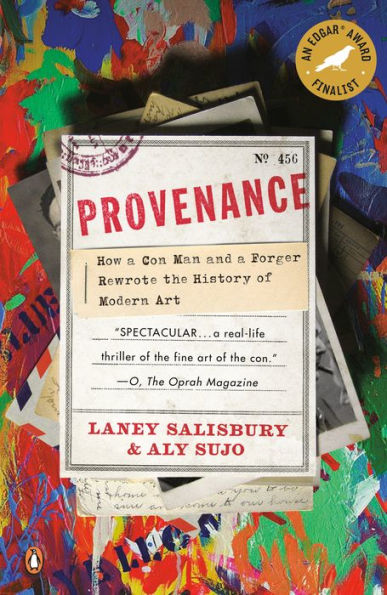Provenance: How a Con Man and a Forger Rewrote the History of Modern Art
The true story of one of the twentieth century's most audacious art frauds
Filled with extraordinary characters and told at breakneck speed, Provenance reads like a well-plotted thriller. But this is most certainly not fiction. It is the astonishing narrative of one of the most far-reaching and elaborate cons in the history of art forgery. Stretching from London to Paris to New York, investigative reporters Laney Salisbury and Aly Sujo recount the tale of infamous con man and unforgettable villain John Drewe and his accomplice, the affable artist John Myatt. Together they exploited the archives of British art institutions to irrevocably legitimize the hundreds of pieces they forged, many of which are still considered genuine and hang in prominent museums and private collections today.
1100310182
Filled with extraordinary characters and told at breakneck speed, Provenance reads like a well-plotted thriller. But this is most certainly not fiction. It is the astonishing narrative of one of the most far-reaching and elaborate cons in the history of art forgery. Stretching from London to Paris to New York, investigative reporters Laney Salisbury and Aly Sujo recount the tale of infamous con man and unforgettable villain John Drewe and his accomplice, the affable artist John Myatt. Together they exploited the archives of British art institutions to irrevocably legitimize the hundreds of pieces they forged, many of which are still considered genuine and hang in prominent museums and private collections today.
Provenance: How a Con Man and a Forger Rewrote the History of Modern Art
The true story of one of the twentieth century's most audacious art frauds
Filled with extraordinary characters and told at breakneck speed, Provenance reads like a well-plotted thriller. But this is most certainly not fiction. It is the astonishing narrative of one of the most far-reaching and elaborate cons in the history of art forgery. Stretching from London to Paris to New York, investigative reporters Laney Salisbury and Aly Sujo recount the tale of infamous con man and unforgettable villain John Drewe and his accomplice, the affable artist John Myatt. Together they exploited the archives of British art institutions to irrevocably legitimize the hundreds of pieces they forged, many of which are still considered genuine and hang in prominent museums and private collections today.
Filled with extraordinary characters and told at breakneck speed, Provenance reads like a well-plotted thriller. But this is most certainly not fiction. It is the astonishing narrative of one of the most far-reaching and elaborate cons in the history of art forgery. Stretching from London to Paris to New York, investigative reporters Laney Salisbury and Aly Sujo recount the tale of infamous con man and unforgettable villain John Drewe and his accomplice, the affable artist John Myatt. Together they exploited the archives of British art institutions to irrevocably legitimize the hundreds of pieces they forged, many of which are still considered genuine and hang in prominent museums and private collections today.
20.0
In Stock
5
1

Provenance: How a Con Man and a Forger Rewrote the History of Modern Art
352
Provenance: How a Con Man and a Forger Rewrote the History of Modern Art
352
20.0
In Stock

Product Details
| ISBN-13: | 9780143117407 |
|---|---|
| Publisher: | Penguin Publishing Group |
| Publication date: | 05/25/2010 |
| Pages: | 352 |
| Product dimensions: | 5.40(w) x 8.30(h) x 0.90(d) |
| Age Range: | 18 Years |
About the Author
From the B&N Reads Blog
